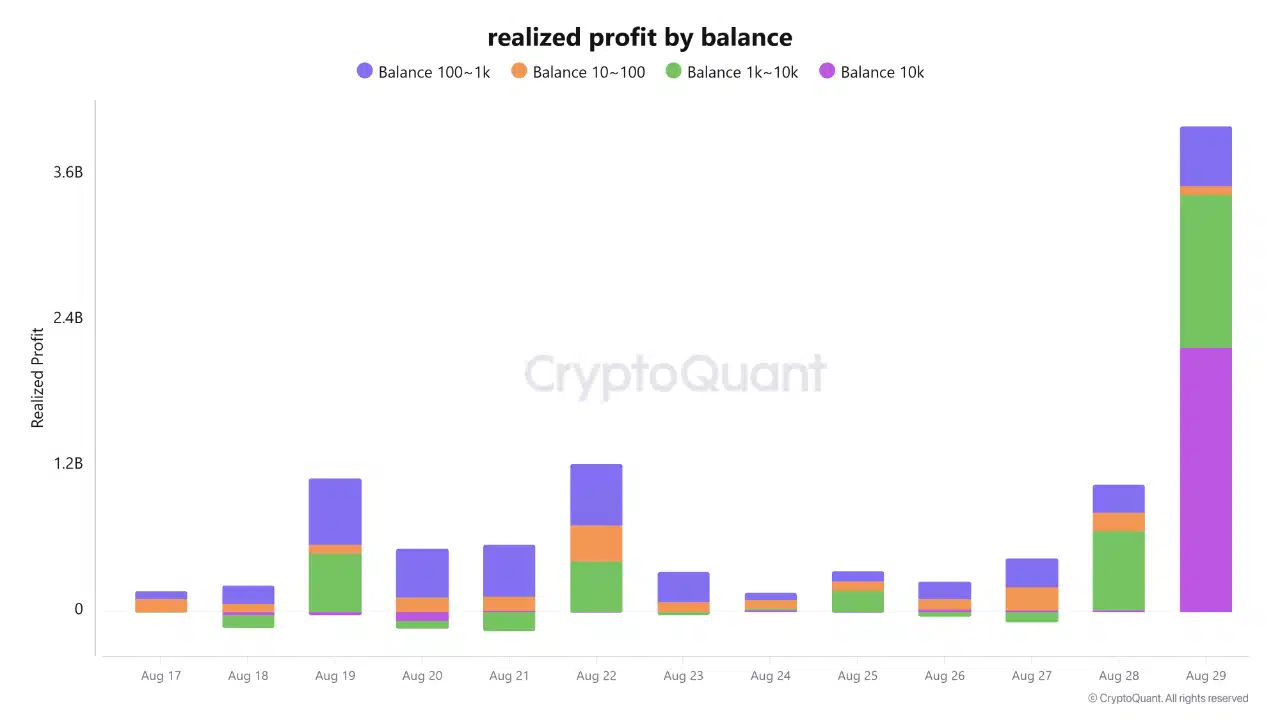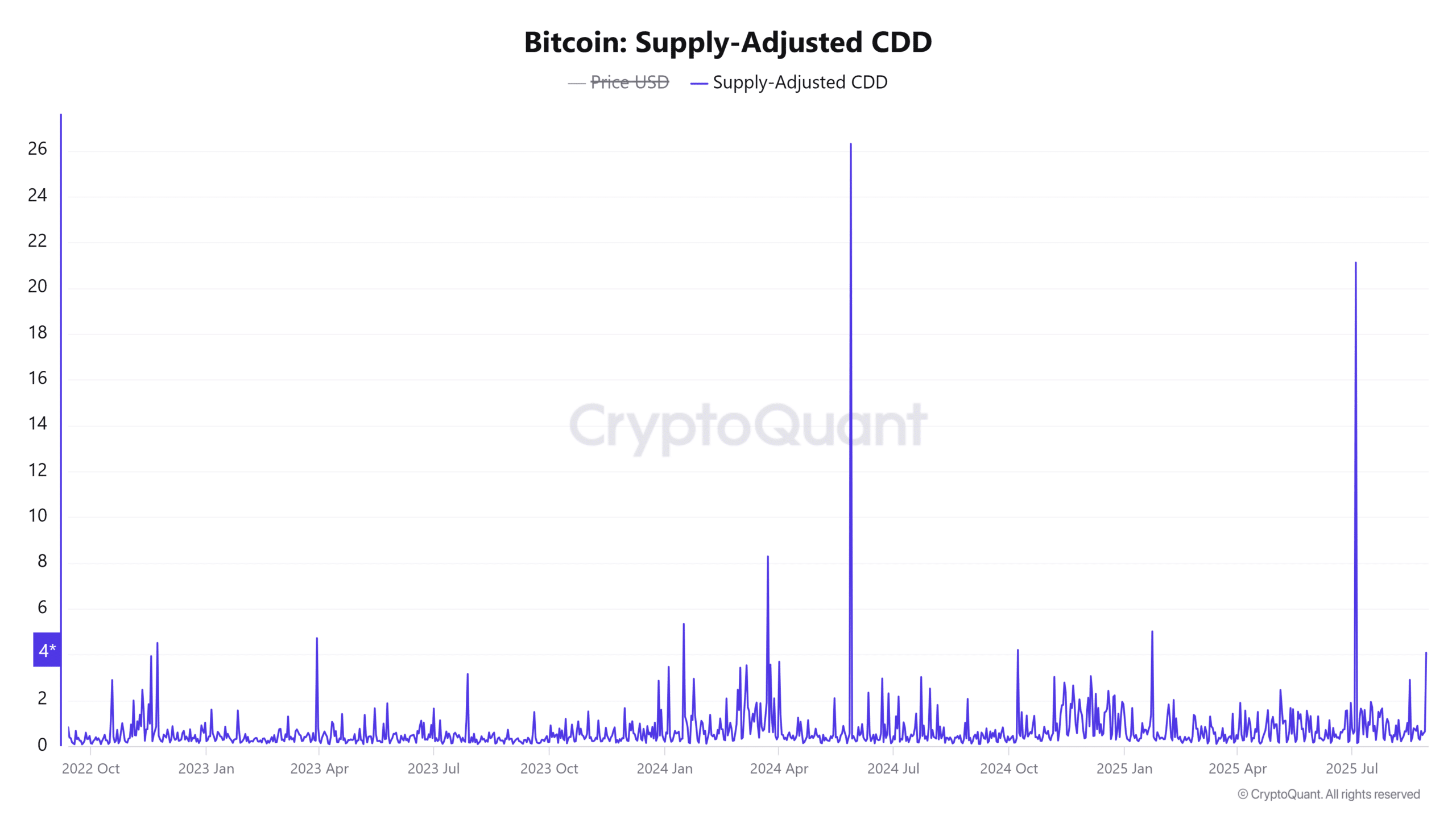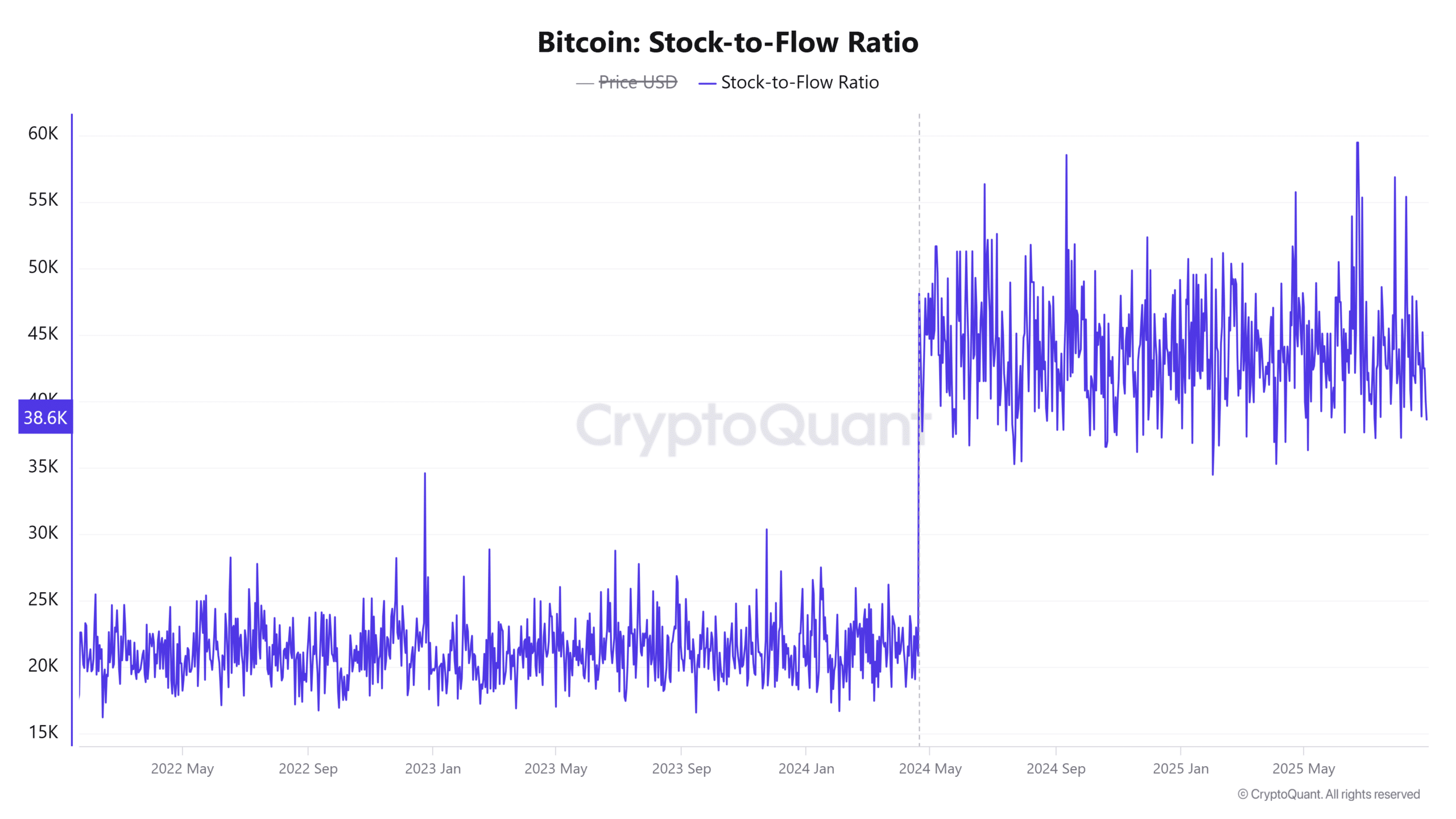Bitcoin whales selling signaled caution as on-chain metrics showed nearly $4 billion in realized profits and a Supply-Adjusted CDD spike, suggesting long-term holders are taking gains and increasing short-term downside risk for newer entrants.
-
Whales booked ~ $4B in realized profits, hinting at distribution.
-
Supply-Adjusted CDD jumped to 5.6, showing older coins re-entered circulation.
-
Stock-to-Flow rose to 3.18M, reinforcing scarcity but potentially overstating short-term strength.
Bitcoin whales selling drove $4B in realized profits and a CDD spike; read the on-chain analysis and risks — full breakdown and actionable takeaways.
What are the on-chain signals saying about Bitcoin whale selling?
Bitcoin whales selling produced nearly $4 billion in realized profits, combining mega-whale, large, and affluent-holder distributions that correlated with a spike in Supply-Adjusted CDD and higher Stock-to-Flow readings. These metrics point to active distribution by long-term holders and a mixed short-term outlook for BTC.
How large were whale exits and what do realized profits show?
Realized Profits totaled roughly $4 billion: mega whales accounted for over $2 billion, large whales roughly $1.25 billion, and affluent holders about $500 million. This concentration of profit-taking created clear selling pressure, increasing liquidity supply into the market.

Source: CryptoQuant (data reported without external links)
Why does Supply-Adjusted CDD matter now?
Supply-Adjusted Coin Days Destroyed (CDD) rose to 5.6, indicating dormant coins moved after long inactivity. This metric highlights that long-term holders are realizing gains and distributing supply into market demand, elevating pullback risk for recent buyers.
When LTHs re-enter distribution, market liquidity increases at elevated price levels, which historically precedes local tops or consolidation periods. Traders should weigh this against broader demand signals before increasing exposure.

Source: CryptoQuant (data reported without external links)
How should traders interpret Stock-to-Flow alongside whale distribution?
The Stock-to-Flow (S2F) ratio climbed to 3.18M, reinforcing a scarcity narrative that typically supports long-term bullish assumptions. However, S2F is a supply-centric valuation model and can appear overly optimistic when active distribution is underway.
Combine S2F with realized profits and CDD to get a nuanced signal: scarcity supports macro bulls, but active whale selling and LTH distribution create near-term vulnerability. Risk management remains essential.

Source: CryptoQuant (data reported without external links)
Do these signals mean Bitcoin is at imminent risk?
Not necessarily. The combination of whale selling, elevated CDD, and high S2F presents a mixed picture: structural scarcity exists, but distribution by experienced holders increases short-term volatility risk. Short-term corrections are plausible even if long-term fundamentals remain supportive.
Frequently Asked Questions
How much did whales realize in profits and why does it matter?
Whales realized nearly $4 billion, a level that signals significant distribution. High realized profits often increase sell-side liquidity and can precede local market tops or extended consolidation.
What does a Supply-Adjusted CDD spike indicate?
A spike to 5.6 in Supply-Adjusted CDD indicates older coins moved after dormancy, pointing to long-term holders selling. This raises the probability of price pullbacks for late entrants.
Should Stock-to-Flow be trusted during active distribution?
Stock-to-Flow highlights long-term scarcity but can be misleading during aggressive distribution. Use S2F alongside realized profits and CDD for a balanced view.
Key Takeaways
- Whale distribution: Nearly $4B in realized profits signals active selling by large holders.
- CDD spike: Supply-Adjusted CDD at 5.6 shows long-term holders are moving coins into the market.
- Scarcity vs. risk: Elevated Stock-to-Flow supports the scarcity thesis but can mask short-term distribution-driven risk; manage position sizing accordingly.
Conclusion
Bitcoin’s on-chain profile shows a tension between structural scarcity and active distribution: Bitcoin whales selling and a Supply-Adjusted CDD spike suggest profit-taking by seasoned holders, while Stock-to-Flow reinforces a longer-term bullish case. Traders should balance conviction with risk controls and monitor realized profits and CDD for early signs of further distribution.
